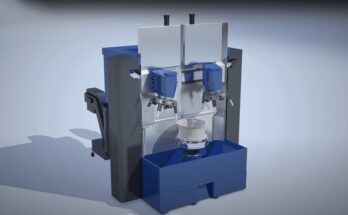One of the most often used profitability measures, or fundamental indicators of how much money a company, service, or good produce, is the profit margin. Profit margin is the value of money a business makes with each transaction, expressed as a percentage. In general, a firm is more lucrative the bigger its profit margin. As a result, investors frequently use this measure to gauge a company’s performance.
Different Profit Margins
The three different forms of profit margins are net profit margin, operating profit margin, and gross profit margin. In the following sections, further information will be provided regarding the intricacies and computations for each profit margin.
Gross Profit Margin
Profit is defined by gross profit margin as all revenue left over after deducting the cost of goods sold (COGS). COGS, which includes labor, raw materials, and other attributable costs, are costs incurred during manufacturing or manufacturing goods intended for sale. COGS does not include debt, taxes, operational or administrative fees, or one-time purchases like equipment.
The formula for gross profit margin:
((Net sales – COGS) / Net sales) * 100 represents the gross profit margin.
Example:
A company’s gross profit margin would be 60% if its revenue is $10,000 and its cost of goods sold is $4,000.
The margin of net profit
The net profit margin determines how much of a company’s total sales is profit. A company’s profit per dollar is expressed as a percentage by dividing net income by revenue. Net income, which includes COGS, operating expenditures, debts, taxes, one-time payments, investments, and secondary activities, is the entire amount left over after deducting all costs and income sources.
The formula for Net Profit Margin:
(Net income/revenue) x 100 is the net profit margin.
Example:
A company’s net profit margin would be 33.33% if it had a net income of $5,000 and revenue of $15,000.
Operating Profit Margin
All overhead, operational, administrative, and sales costs required to run a corporation are included in the operating profit margin, which is also referred to as the operating income margin, EBIT margin, and return on sales. Debts, taxes, and other non-operational expenditures are not included in the computation. In other words, the operating profit margin determines the proportion of each dollar that is left over after paying for all necessary expenses by taking into account all costs associated with operating a firm daily.
The formula for Operating Profit Margin:
(Operating income / Revenue) * 100 is the operating profit margin.
Example:
An organization’s operating profit margin is 10% if it earns $10,000 in operating income on $100,000 in revenue.
FINAL INSIGHT
Why the Profit Margin Matters.
All profit margin variations offer helpful criteria for evaluating a company’s development potential, investment feasibility, and financial stability compared to its rivals. The net profit margin is the most accurate indicator of a company’s total profitability if there is one particular number to concentrate on. Your company’s financial performance will be aided by maintaining high margins, enhancing your potential to obtain a small business loan.




